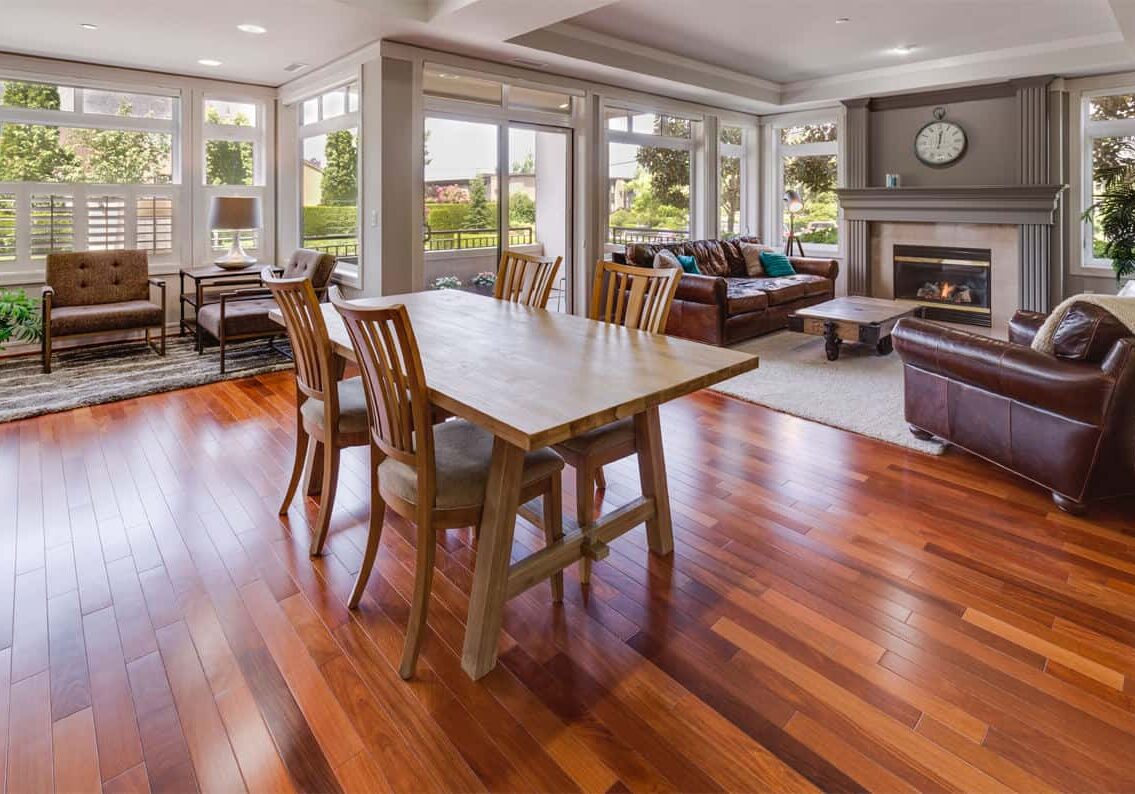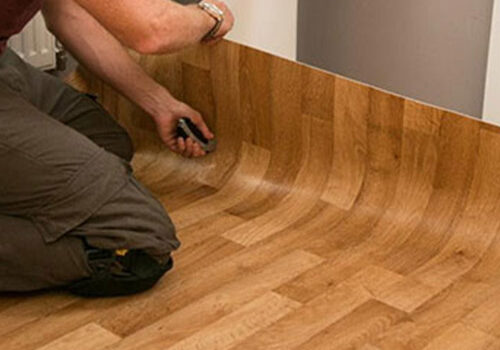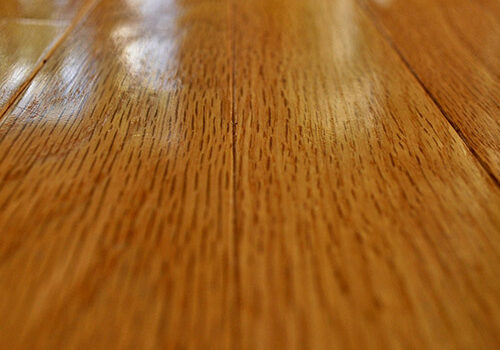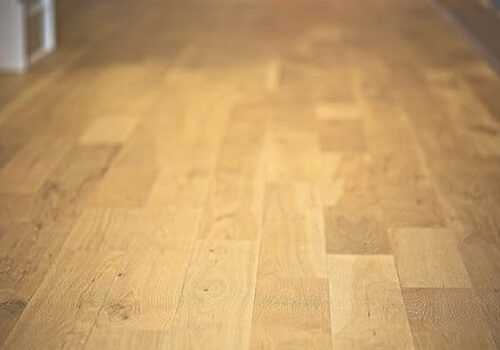Choosing the Best Flooring for Your Home: Laminate, Vinyl, Hardwood, or Engineered Wood
Today's flooring market is rich with ideas. That wasn’t always the case. For years people didn't have to stress about which floor to install, because they had only a few options. They were limited to:
- Red Oak
- White Oak
- Maple
Oak flooring was usually the first option, especially for its classic look and warmth that it provides to everyone's home.
However, new material and technology advancement lead to new flooring types, leaving people with so many choices they began to feel overwhelmed. Or at least, that’s what we’re told. But there’s no need to fear. Today we would like to help in showing how to select the best flooring option for your home.
To help people find what they need and get the best value, we have created this straightforward guide on four different flooring options:
- Laminate
- Vinyl
- Wood
- Engineered wood

Laminate Wood Flooring
Laminate flooring is seen everywhere nowadays. Every year this material seems to get better and better at mimicking wood.
Top-quality laminates now have a richer and more natural (deeper) wood texture, resulting in a much more realistic feel.
Premium laminates are 12mm thick. Laminate flooring planks are usually 3 to 7 inches wide and about 48 inches long.
Laminate Flooring Materials:
- The backing layer is known as the backbone or plank; it serves as a stabilizing layer.
- The second layer is the core layer (core board) known for its high density (or medium density) fiberboard. More top-quality laminate comes with a higher density core.
- The third layer is called the printed layer that looks like wood, stone, metal, or much more, offering a more natural look.
- The fourth layer is a wear layer or so-called 'overlay' that protects your floors.
Laminate Flooring Facts:
- Laminate is often advertised as 'water-resistant,' but in reality, it can be damaged if water seeps through cracks
- Laminate shouldn't be your first option for wet locations
- Laminate is easy to care for, but it can't be refinished
- Easy to install
- Laminate comes at bargain prices: it can be purchased for $1 to $3 per square foot
- Can last 10-20 years if treated right, but styles change and again it can not be restyled.
- Comfortable underfoot
- Is manufactured from petroleum-based materials and is essentially plastic

Vinyl Wood Flooring- WPC
Vinyl was first invented during the 1930s, and ever since, it has been one of the most popular flooring options.
Promoted as water-resistant and easy to install, vinyl is great for locations such as the living room, due to its realistic wood look. Vinyl is less high maintenance compared to laminate.
Vinyl Flooring Materials:
Vinyl is made out of four different materials:
- The backbone of the plank is the backing layer with high-density and moisture resistance built to least.
- The core, which is solid vinyl, is also tough, with high density.
- The printed vinyl layer imitates wood, stone, or any other design.
- The wear layer: the thicker the wear layer, the more protection your floor will have.
- Plastic.
Premium vinyl can be a bit more expensive than luxury laminate because it includes a waterproof core and ultra-thick wear layer.
Vinyl Flooring Facts:
- Designed to be inexpensive
- Durable and dependable
- Minimal maintenance
- Fast, easy, and cheap to install
- With proper care can last up to 20 years, but like the above, cannot be repaired
- Plastic
Three Main Vinyl Types:
- Sheet Vinyl: comes in large rolls with a width between 6 to 12 feet and is cut to fit your room.
- Solid Vinyl Tile: comes in two types of either 1-foot squares or strips of three.
- Luxury Vinyl Tile: this is the premium vinyl product that can imitate any kind of flooring.

Solid Hardwood Flooring
Hardwood or otherwise called solid wood, has been one of the most popular types of flooring across the globe for decades, and especially in the States.
Its construction is simple - wooden boards or planks about 0.75 inches thick, are installed by nailing them to a wood subfloor.
Solid wood can be made from many kinds of wood, from domestic species such as oak to more exotic options, such as Brazilian cherry.
Solid Hardwood Flooring Facts:
- Comes in strips (1.5-2.5 inches) or planks (4 to 8 inches)
- Can be either finished or unfinished
- Prefinished wood flooring costs less and demands less work
- Wood flooring is long-lasting because it can be refinished
- Can increase the resale value of your home
- Easy to clean
- Bad choice for bathrooms or laundry rooms (moisture)
- Vulnerable to scratches and dents
- Wood flooring should be refinished once every ten years
- Wood flooring typically costs $4 to $10 per square foot
Solid Hardwood vs. Engineered Hardwood
Many often confuse solid flooring (hardwood flooring) with engineered hardwood, because their appearance and structure are alike. However, when you know what to look for, it's easy to spot the difference.
The only way to see the difference between the solid and engineered hardwood is to see the cross-section, because they look almost identical from the top.
- Solid hardwood is one piece of wood from top to bottom. It comes in different thicknesses. Most commonly, it's three-quarters of an inch. Solid hardwood must be nailed down or stapled to a wood subfloor.
- Engineered wood is made up of layers of wood. Seven segments are standard, but it can be from four or five to nine. With engineered hardwood, the wood is put at ninety degree angles. The bottom and the top players are usually the real oak or any other natural wood.

Engineered Wood
Engineered wood flooring looks just like solid wood, but it's made differently. Engineered wood has a thin veneer of natural wood placed on the top.
This type of hardwood has less expensive plywood underneath, which makes this wood cheaper but more resilient to temperature changes.
Engineered wood comes in a wide variety of patterns, wood types, and board widths. It can be glued down, nailed down, or installed as a floating floor.
Some engineered wood flooring comes with a special tongue and groove system that clicks into place to form a tight seam without glue or nails.
Engineered Hardwood Flooring Facts:
- Can scratch and dent easily
- Less durable than solid hardwood
- Fitting for basements
- Suitable for enclosed porches
- A bit more affordable compared to solid hardwood
- List range is $4.32 per foot
The Bottom Line
Flooring options listed here aren't the only ones. However, they are among the most popular..
Always do thorough research about flooring options, see what their advantages and disadvantages are, and pick the one that suits you the best. Find a flooring option that fits both your taste and your budget.
